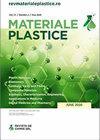几种牙科用复合材料的吸水性分析
IF 0.7
4区 材料科学
Q4 MATERIALS SCIENCE, MULTIDISCIPLINARY
引用次数: 0
摘要
本研究旨在研究在第14天和第30天用相同的束装置聚合的3种不同的可冷凝体填充复合材料、两种可流动体填充复合物、两种微杂化复合材料、一种纳米填充复合材料和一种纳米杂化复合材料的吸水水平。我们评估了九种不同的复合材料。将材料制备为直径为7mm、厚度为2mm的圆柱形块体(n=7)并聚合。每个样品在蒸馏水中保存指定时间,并通过ISO 4049方法进行测量。我们使用Kruskal-Wallis检验来比较两个以上数值变量没有正态分布的独立组。如果采用非参数检验,则Dwass Steel Critchlow Fligner检验评估了各组之间的差异。我们使用Wilcoxon检验来比较没有正态分布的数值变量(每种水泥材料在第14天和第30天测量的吸水值)。对于吸水性,树脂复合材料在第十四天和第三十天的吸水值之间没有统计学上的显著差异。在比较每种树脂复合材料的第14次和第30次测量之间的吸水值时,没有发现统计学上的显著差异。需要通过保持评估的复合材料和用4mm样品评估的散装填充复合材料的条件不变来进行更广泛的研究。本文章由计算机程序翻译,如有差异,请以英文原文为准。
An Analysis of Water Sorption of Some Composites Used in Dentistry
This study aimed to investigate the water sorption levels of 3 different condensable bulk fill composites, two flowable bulk fill composites, two microhybrid composites, one nanofilled composite, and one nanohybrid composite material polymerized with the same beam device on the 14th and 30th days.We evaluated nine different composite materials. The materials were prepared as cylindrical blocks (n=7) with a diameter of 7 mm and a thickness of 2 mm and polymerized. Each sample was kept in distilled water for specified times and measured by the ISO 4049 method.We used The Kruskal-Wallis test to compare more than two independent groups where numerical variables had no normal distribution. The Dwass-Steel-Critchlow-Fligner test evaluated differences between the groups if the non-parametric tests were applied. We used The Wilcoxon test to compare the numerical variables without normal distribution (water sorption values in the 14th and 30th-day measurements for each cement material).For water sorption, there was no statistically significant difference between the water sorption values of the resin composite materials on the 14th and 30th days. No statistically significant difference was found in comparing water sorption values between the 14th and 30th measurements for each resin composite material. There is a need for more extended studies by keeping the conditions constant for the evaluated composites and for bulk fill composites to be evaluated with 4mm samples.
求助全文
通过发布文献求助,成功后即可免费获取论文全文。
去求助
来源期刊

Materiale Plastice
MATERIALS SCIENCE, MULTIDISCIPLINARY-
CiteScore
1.40
自引率
25.00%
发文量
99
审稿时长
6-12 weeks
期刊介绍:
Materiale Plastice, abbreviated as Mater. Plast., publishes original scientific papers or guest reviews on topics of great interest.
The Journal does not publish memos, technical reports or non-original papers (that are a compiling of literature data) or papers that have been already published in other national or foreign Journal.
 求助内容:
求助内容: 应助结果提醒方式:
应助结果提醒方式:


